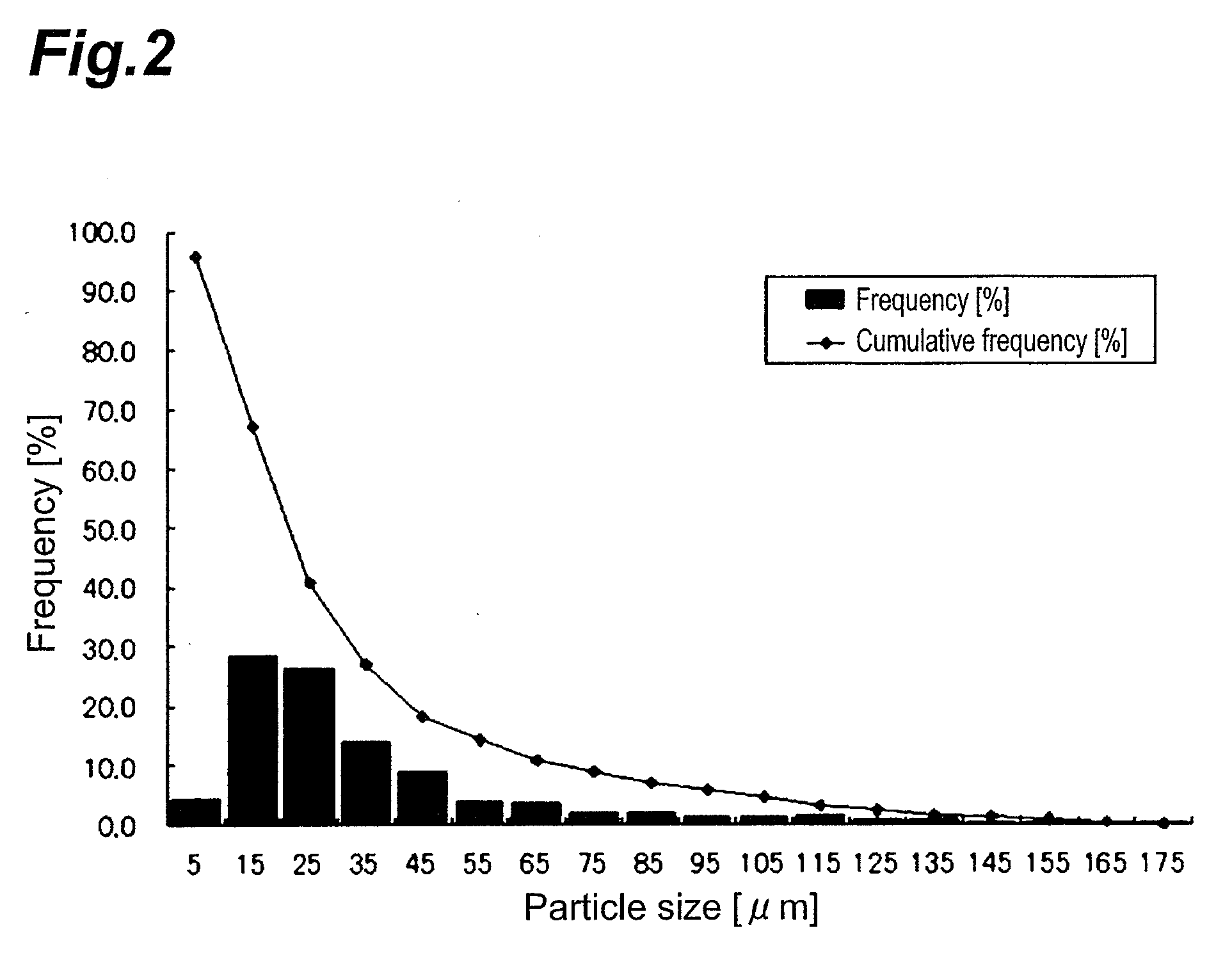Sintered Ceramic, Slide Part therefrom, and Process for Producing Sintered Ceramic
a technology of sintered ceramics and slide parts, applied in the direction of shafts, bearings, mechanical equipment, etc., can solve the problems of insufficient sealing properties, low density of sintered bodies, and difficult to obtain excellent sliding properties, and achieve the effects of low cost, excellent sliding properties, and minimal cracking
- Summary
- Abstract
- Description
- Claims
- Application Information
AI Technical Summary
Benefits of technology
Problems solved by technology
Method used
Image
Examples
example 1
[0065]In Step A, 4 parts by weight of artificial graphite with a mean particle size of 30 μm and 3 parts by weight of carbon black with a mean particle size of 43 nm were added to 100 parts by weight of silicon carbide powder with a mean particle size of 0.7 μm. There were further added 0.6 part by weight of boron carbide as a sintering aid, 2 parts by weight of a phenol resin in terms of carbon, 3 parts by solid weight of polyvinyl alcohol as a binder and 0.6 part by weight of polyethylene glycol (polymerization degree: #400). A starting mixture was thus obtained.
[0066]In Step E, the compact was sintered at 2190° C.
[0067]No cracking was found upon observing the obtained sintered body. Also, as a result of observing the structure of fractured and lapped surfaces of the sintered body, graphites with two different mean 2 and rotation axis 6 there is positioned a rotating secondary seal 5 filling the gap.
[0068]In this mechanical seal 10, the seal ring 2 is pressed against the mating ri...
examples
[0076]The present invention will now be explained in greater detail through the following examples, with the understanding that these examples are in no way limitative on the invention.
[Production of Ceramic Sintered Body]
[0077]Ceramic sintered bodies for Examples 1-8 and Comparative Examples 1-12 were fabricated. The steps carried out for production of all of the ceramic sintered bodies of the examples and comparative examples will be explained first. The following steps A-E were carried out for production of the ceramic sintered bodies. These steps are summarized in the flow chart of FIG. 1.
Step A: The prescribed starting components were blended to prepare a starting mixture, and ion-exchanged water was added thereto to produce a slurry with a concentration of 20 vol %, after which the pH of the slurry was adjusted to 8-10.
Step B: The slurry was mixed with a resin ball mill for 5 hours, and then a spray drier was used for spray-drying under conditions with an inlet temperature of ...
example 2
[0083]In Step A, 6 parts by weight of artificial graphite with a mean particle size of 30 μm and 3 parts by weight of carbon black with a mean particle size of 43 nm were added to 100 parts by weight of silicon carbide powder with a mean particle size of 0.7 μm. There were further added 0.6 part by weight of boron carbide as a sintering aid, 2 parts by weight of a phenol resin in terms of carbon, 3 parts by solid weight of polyvinyl alcohol as a binder and 0.6 part by weight of polyethylene glycol (polymerization degree: #400). A starting mixture was thus obtained.
[0084]In Step E, the compact was sintered at 2200° C.
[0085]No cracking was found upon observing the obtained sintered body. Also, as a result of observing the structure of fractured and lapped surfaces of the sintered body, graphites with two different mean particle sizes, 2 μm and 30 μm, were found in the silicon carbide parent material.
PUM
| Property | Measurement | Unit |
|---|---|---|
| mean particle size | aaaaa | aaaaa |
| mean particle size | aaaaa | aaaaa |
| mean particle size | aaaaa | aaaaa |
Abstract
Description
Claims
Application Information
 Login to View More
Login to View More - R&D
- Intellectual Property
- Life Sciences
- Materials
- Tech Scout
- Unparalleled Data Quality
- Higher Quality Content
- 60% Fewer Hallucinations
Browse by: Latest US Patents, China's latest patents, Technical Efficacy Thesaurus, Application Domain, Technology Topic, Popular Technical Reports.
© 2025 PatSnap. All rights reserved.Legal|Privacy policy|Modern Slavery Act Transparency Statement|Sitemap|About US| Contact US: help@patsnap.com



